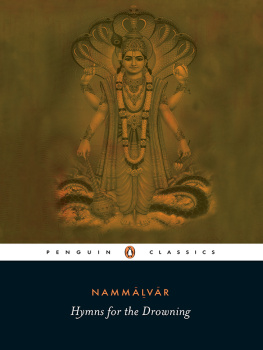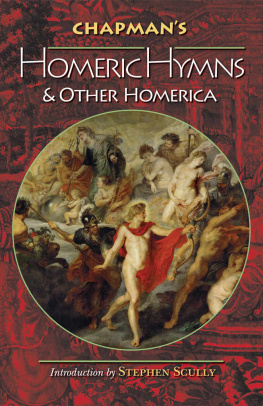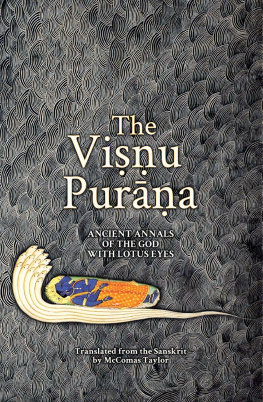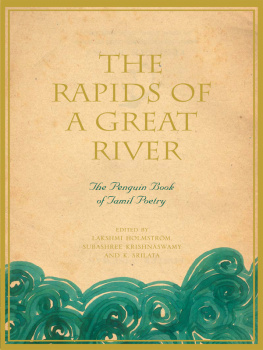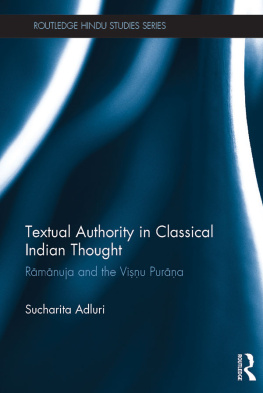Nammvr, also known as Ma and Catakpan, was born into a peasant caste (vea) and lived from AD 880 to 930. Although his dates have not been conclusively established, legend has it that he was born in Tirukurukr (todays Avrtirunakari in Tamil Nadu) into a princely family and lived for only thirty-five years.
Tradition recognizes twelve vrs (saint-poets devoted to Viu) between the sixth and the ninth centuries in South India, of whom Nammvr is the best known. He composed four works, of which the 1,102 verses of Tiruvymoi are the most important.
The fame and importance of Nammvr was such that soon after his death his images were installed in South Indian Viu temples and revered as the very feet of God.
A.K. Ramanujan was an award-winning translator and poet whose translations, poetry, and essays have been widely published and anthologized. He was William E. Colvin Professor of South Asian Languages and Civilizations, Linguistics, and a member of the Committee on Social Thought at the University of Chicago. His works included: Speaking of Siva, The Interior Landscape and Folktales From India.
A.K. Ramanujan died in 1993 at the age of sixty-four.
Introduction
The poems in this book are some of the earliest religious poems about Viu, or Tiruml, the Dark One. The author is an vr, [one] immersed in god; the root verb means to immerse, to dive; to sink, to be lowered, to be deep. The title Hymns for the Drowning plays on the meanings of such an immersion for poet and reader.
Tradition recognizes twelve vrs, saint-poets devoted to Viu.
The author of the poems in this book had several names, for example, Ma and Caakpa, but he was best known as Nammvr, our own vr. He is considered the greatest of the twelve vrs. Anyone who reads his poems can see why: the poems are at once philosophic and poetic, direct in feeling yet intricate in design, single-minded yet various in moodwondering, mischievous, tender, joyous, subtly probing, often touching despair but never staying with it. He composed four works, of which the 1,102 verses of Tiruvymoi (holy word of mouth/word of holy mouthgod-spell, if you wish), are the most important. Very early, the Tiruvymoi was hailed as the ocean of Tamil Veda in which the Upaniads of the thousand branches flow together.
According to historians, Nammvr was born into a peasant caste (vea) and lived from approximately a.d. 880 to 930. Some would date him a century earlier. Although the facts are hazy, the legends are vivid and worth retelling. According to these latter, he lived for only 35 years. He was born in Tirukurukr (todays vrtirunakari, in Tamilnadu), into a princely family in answer to their penance and prayers. When he was born, the overjoyed mother gave him her breast but the child would have nothing of it. He uttered no sound, sat if seated, lay if laid down, seemed both deaf and mute. The distressed parents left the child at the feet of a local Viu idol. Once there, he got to his feet, walked to a great tamarind tree, entered a hollow in it and sat like a yogi in a lotus posture, with his eyes shut and turned inward.
Meanwhile, in North India, Maturakavi, a pilgrim poet and scholar, was wandering near the Ganges; suddenly he saw a light in the southern sky. He watched it for three days and followed it all the way to Kurukr, where, having led him to the silent child in the tamarind hollow, it vanished. Maturakavi tried in vain to wake the yogi by clapping his hands and dashing stones on the temple walls. Finally, he went to the hole in the tree and asked, Master, if the subtle [spirit] is embodied in the gross [matter], what will it eat, where will it rest? The yogi at once replied: That it will eat, and there it will rest! Maturakavi realized at once that God was what the Master ate, and God was what he lived in. With that exchange, master and disciple found each other; the master broke his life-long silence and poured forth more than a thousand hymns to Viu. The thousand magnificent hymns, each beginning with the last word of the previous one, were one continuous poeman icon for the endless, ever-changing forms of the Lord.
Such was Nammvrs fame and importance that, soon after his death, images of him were installed in South Indian Viu temples, and revered as the very feet of God. In these temples today every worshipers head receives the touch of a special crown that represents Vius feet and our vr; it is named caakpam after him. He is called the first lord of our lineage. He is the body, the other saints are the limbs. His poems have been chanted in temple services and processions since the eleventh century. Indeed, at the rrankam temple a special ten-day festival is devoted to his work: a professional reciter (with the title araiyar, king), dressed in ritual finery, sings and enacts the hymns for the listening image of Lord Viu.
A certain Ntamui (10th century?) gathered and ordered the compositions of the twelve Vaiava saints and arranged for their recitation. According to tradition, he heard visitors from Nammvrs birthplace of Kurukr recite ten stanzas, and he saw that they were only ten out of a thousand. So he went to Kurukr, worshiped Viu, and meditated as a yogi, but he failed to invoke the poet or receive the poems. Then he recited 12,000 times Maturakavis praise-poems about his master, Nammvr. Both Maturakavi and Nammvr appeared to him in a vision and gave him a knowledge of the vrs four works. Some accounts say, he received all of the four thousand in this way. His grandson Ymuna (10th-11th century), celebrated in Sanskrit the impeccable [Tamil] scriptures collected by Ntamui. It is significant that both grandfather and grandson were priests at the rrakam temple. Through them and through Rmnuja (11th-12th century), a non-Sanskritic, non-brahmanical religious literature (Nammvr was a dra saint) became central to brahman orthodoxy. Inscriptions as early as the 11th century mention endowments of land for the maintenance of reciters for the vrs hymns.

